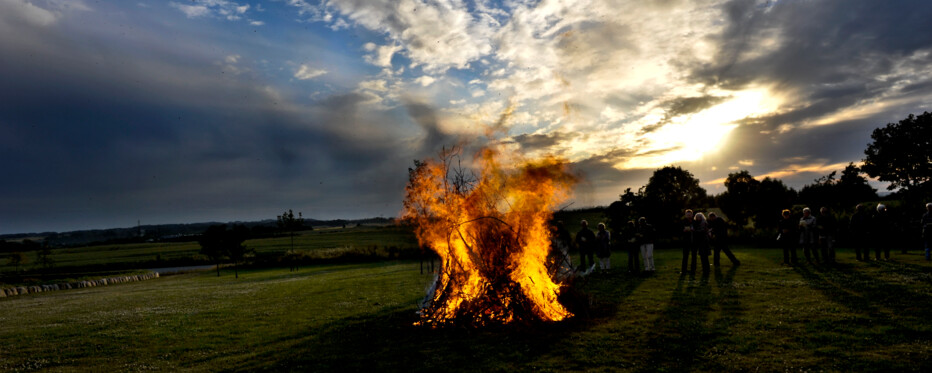Saint John's Day and Saint John's Eve
June 24 is Saint John's Day, the birthday of John the Baptist. The evening before June 24 is called Saint John's Eve (in Danish sankthansaften). On this evening bonfires are lit all over the country. Having a bonfire on June 23 was a Midsummer tradition even before Christianity – and John the Baptist – was introduced in Denmark.
John the Baptist
When Christianity was introduced, June 24 became a day of commemoration of John the Baptist. The Bible tells us that John the Baptist was Jesus' cousin and born six months before him. John was called the Baptist because he baptised people. He baptised Jesus, too.
John the Baptist considered himself a forerunner of Jesus and kept saying that Jesus was to come and baptise people with the Holy Spirit, God's Spirit, and not merely with water. John the Baptist was put in prison because he had criticised the Jewish king for having married his own sister. Later he was beheaded at the request of the king’s stepdaughter and – indirectly – the queen.
John, Jesus and solstice
John and his cousin Jesus constitute two poles in the rhythm of the year. John was a forerunner whose importance slowly decreased. Therefore, Saint John's Day, the first of the two poles, falls at summer solstice when the daylight begins to decrease. The other pole is the birth of Jesus at winter solstice where the daylight begins to increase.
John was a prophet who preached repentance and judgment using very severe language. We commemorate him by making a bonfire. Jesus preached forgiveness and hope. We celebrate his birth as the coming of a light that shines in the darkness.
Saint John's Eve and the church
Saint John's Day survived the Reformation but the festival was abolished at the reform of the church's calendar in 1770. However, the popular traditions associated with June 24 did not disappear. In recent years, a number of churches have re-established the tradition of holding a service on Saint John's Eve. In doing so they relate the service to the popular Midsummer celebration.



